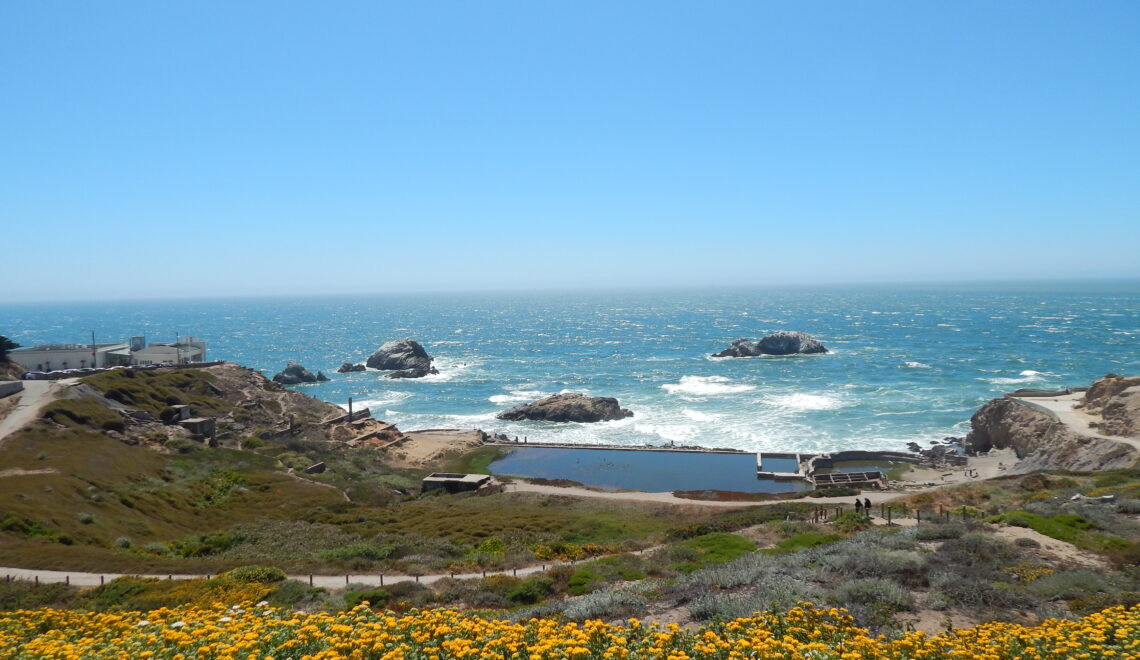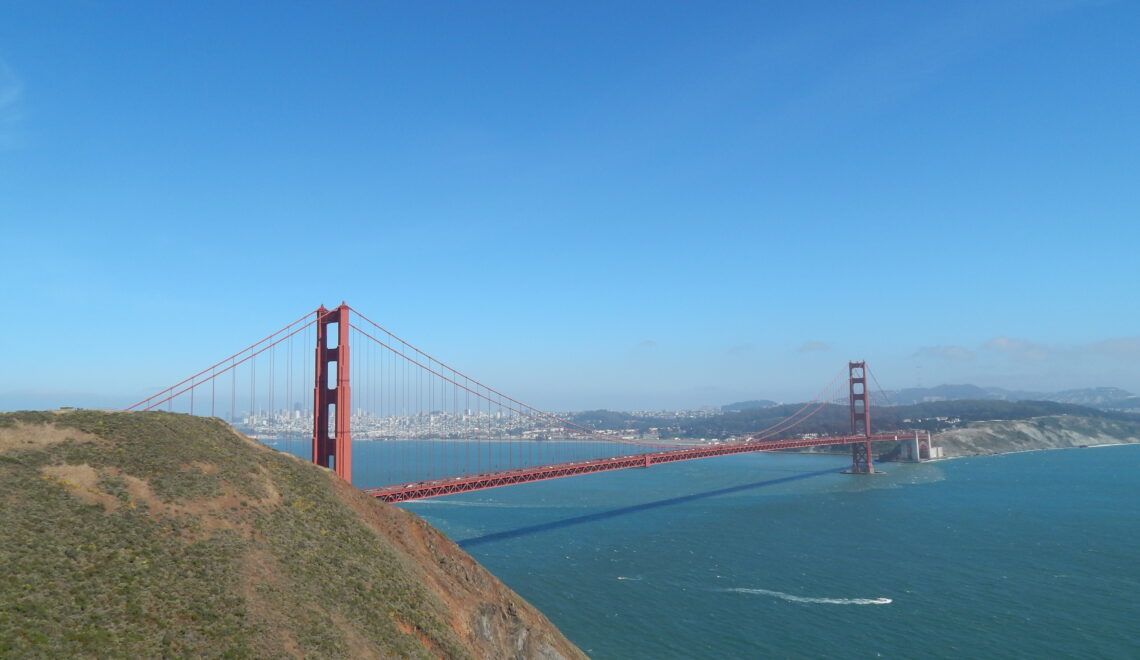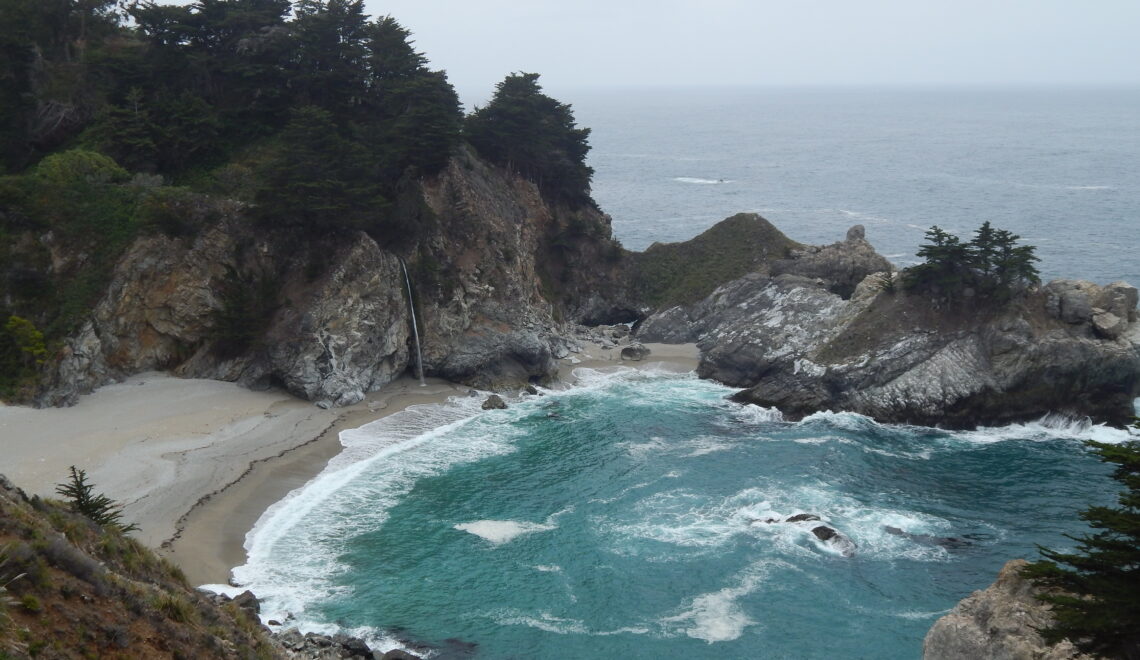Where do I begin with today’s report? It was a whirlwind of activities in Banda Aceh. I gathered numerous impressions, witnessed beautiful sights, and delved into the rich history of Banda Aceh. My preconceptions about this city and its citizens have undergone a significant shift in these past days. I initially anticipated a more conservative atmosphere, expecting to change my clothes at the Grand Mosque yesterday. However, to my surprise, the locals were perfectly fine with my touristy outfit (t-shirt and shorts). No one appeared offended by my attire. Everywhere I go, the people exude hospitality, accompanied by warm smiles and kind greetings as I pass by.
The PLTD Apung 1
Today promised to be a lengthy affair as I left the hotel bright and early around 9 am. Opting for a becak, I made my way to my first destination in Banda Aceh—the notable electrical generator ship, PLTD Apung 1. My becak driver patiently awaited my return as I explored the premises. A knowledgeable lady shared insights about the 2600-ton ship, which housed three primary generators dedicated to powering Banda Aceh. Interestingly, the ship was stationary and served the purpose of cooling down the generators. However, on Boxing Day in 2004, the tsunami forcefully propelled the ship three kilometers inland. Disturbingly, I later discovered that the vessel tragically landed on two houses, claiming the lives of the occupants.
Presently, PLTD Apung 1 stands as one of the numerous landmarks memorializing the tsunami and serves as a modest tourist attraction. As I strolled around, many locals greeted me with joyful smiles, and a group of teenagers even requested to take a picture with me. In a light-hearted manner, I jokingly exclaimed, “5000 rupiah,” displaying five fingers. Laughter ensued, and we all shared a moment as I joined them for the photo before continuing on my way.

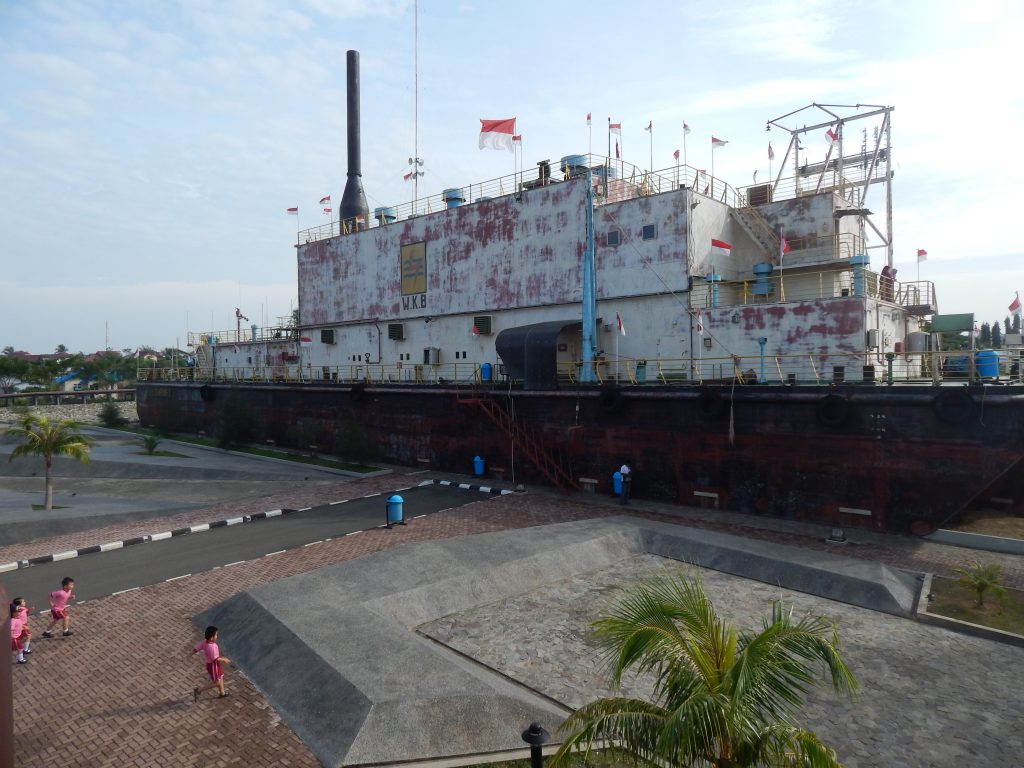


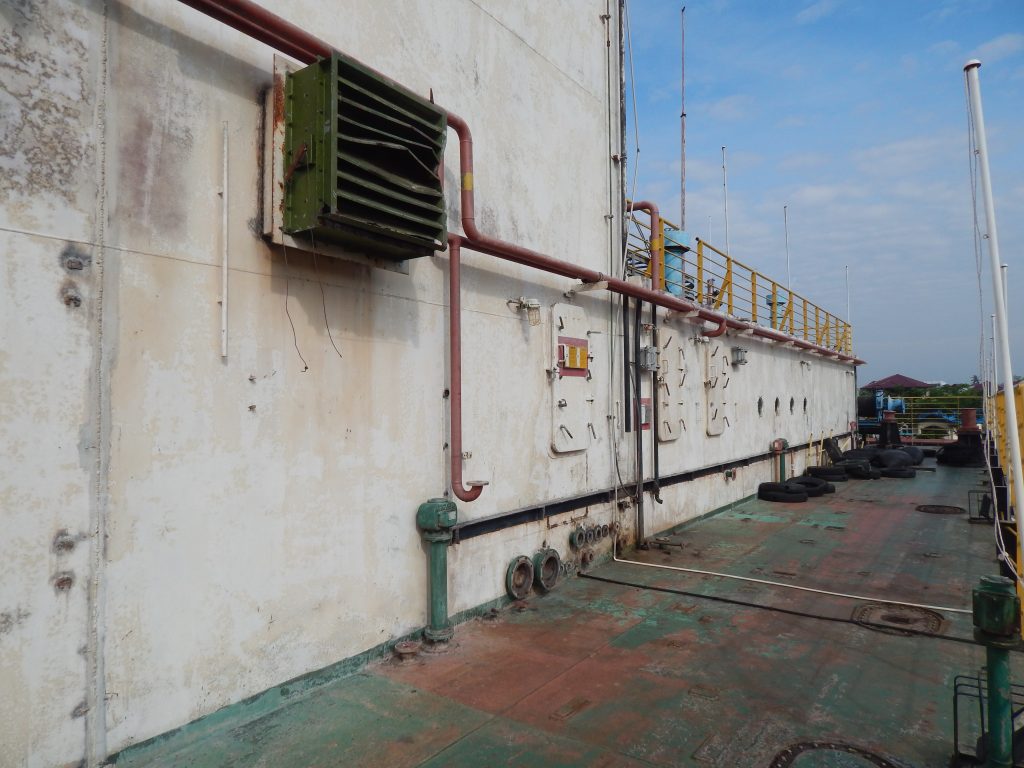


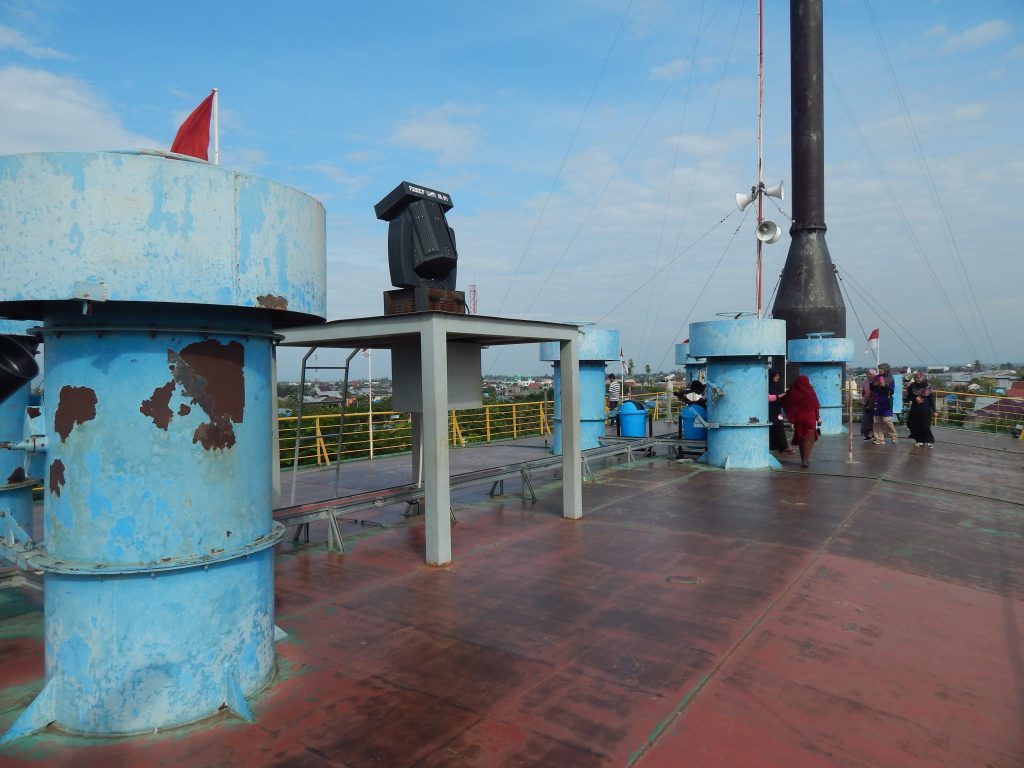
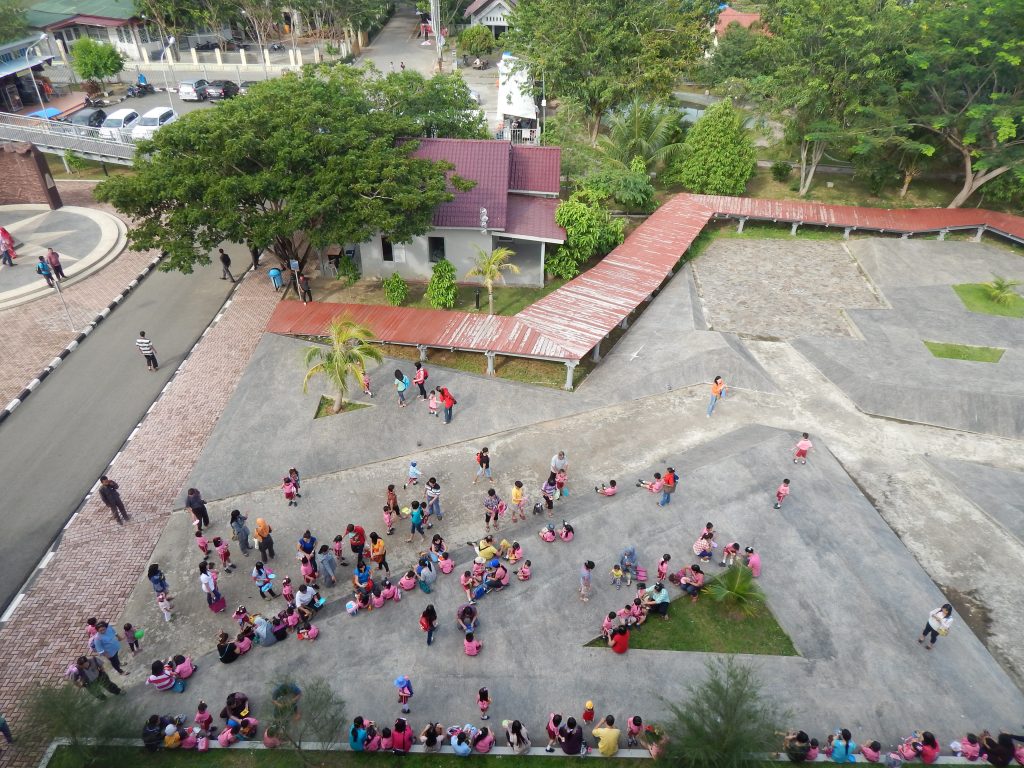
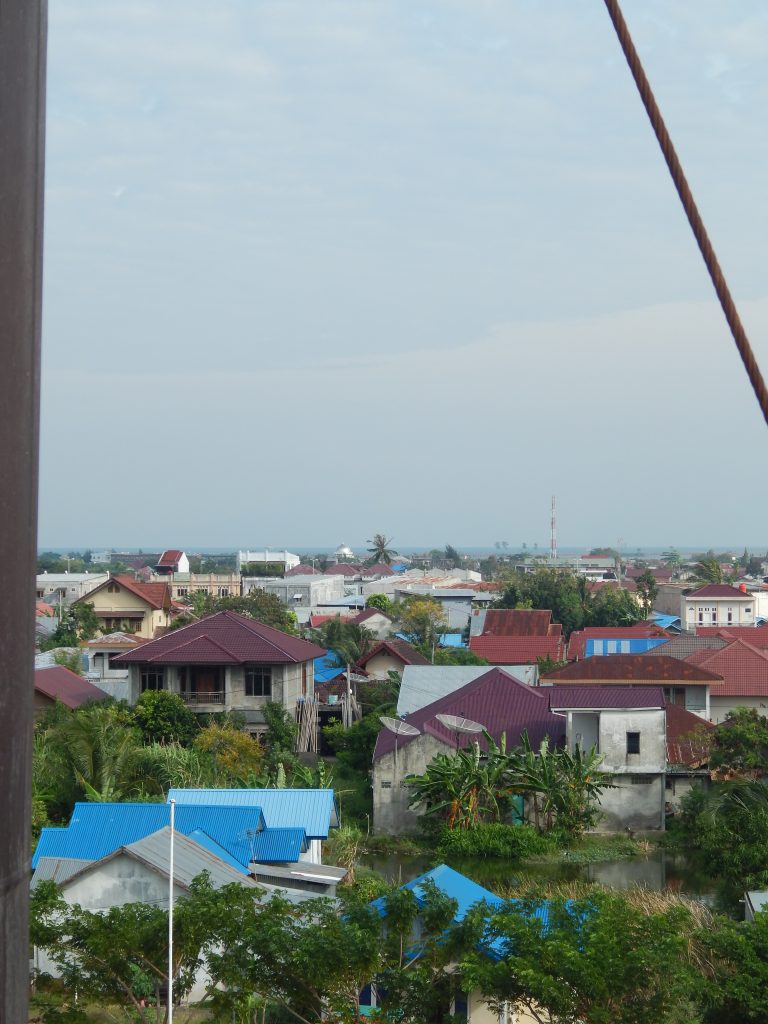

Standing atop the vessel, I enjoyed a panoramic view of the city. Notably, Banda Aceh lacked a traditional skyline, giving it the appearance of a vast village from my vantage point. The last photo captures the distant shoreline of Banda Aceh, allowing me to envision the immense force of the tsunami that propelled the vessel so far inland.
Tsunami Landmarks in Banda Aceh
My becak driver, who didn’t speak English, and I struggled with communication. After conveying my desire to visit the Tsunami Museum, he took a different route, guiding me through narrow alleys dotted with huts. Eager to show me something hidden, he led me to a small courtyard surrounded by somewhat dodgy and filthy local houses. To my surprise, two boats were positioned there. Grateful for the unexpected discovery, I thanked my driver profusely. Exploring the site and taking pictures, I climbed one of the boats with his approval. However, mindful of the sensitivity of such locations, I limited my time there, feeling a bit like a disaster tourist, and left after about five minutes.
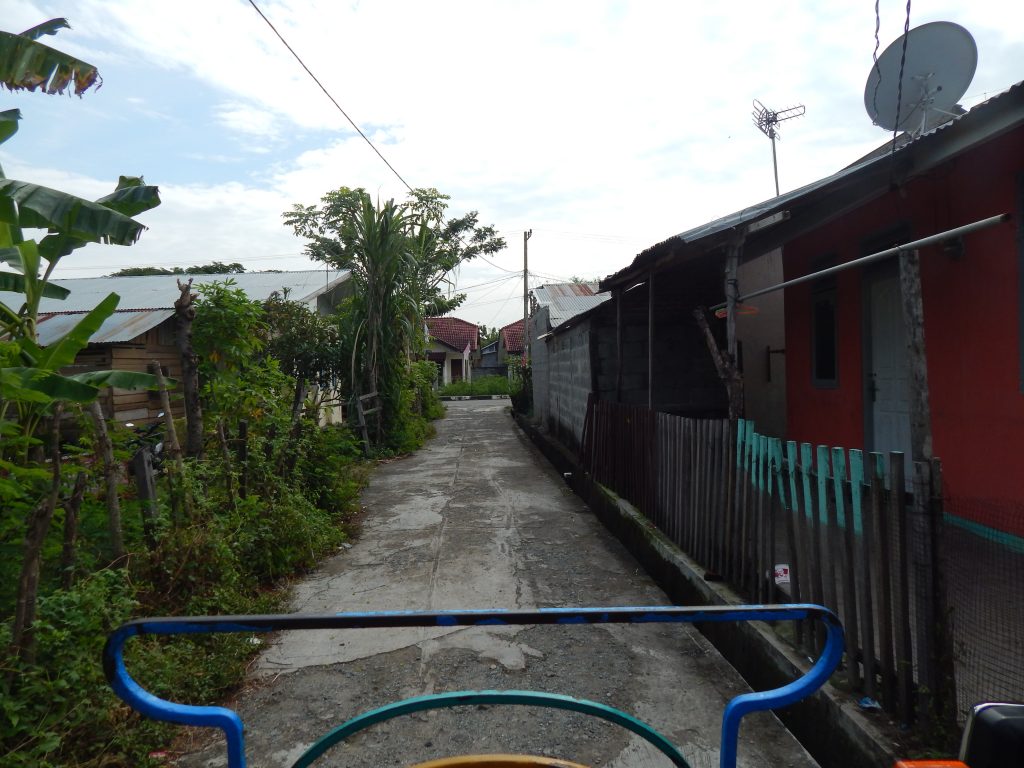

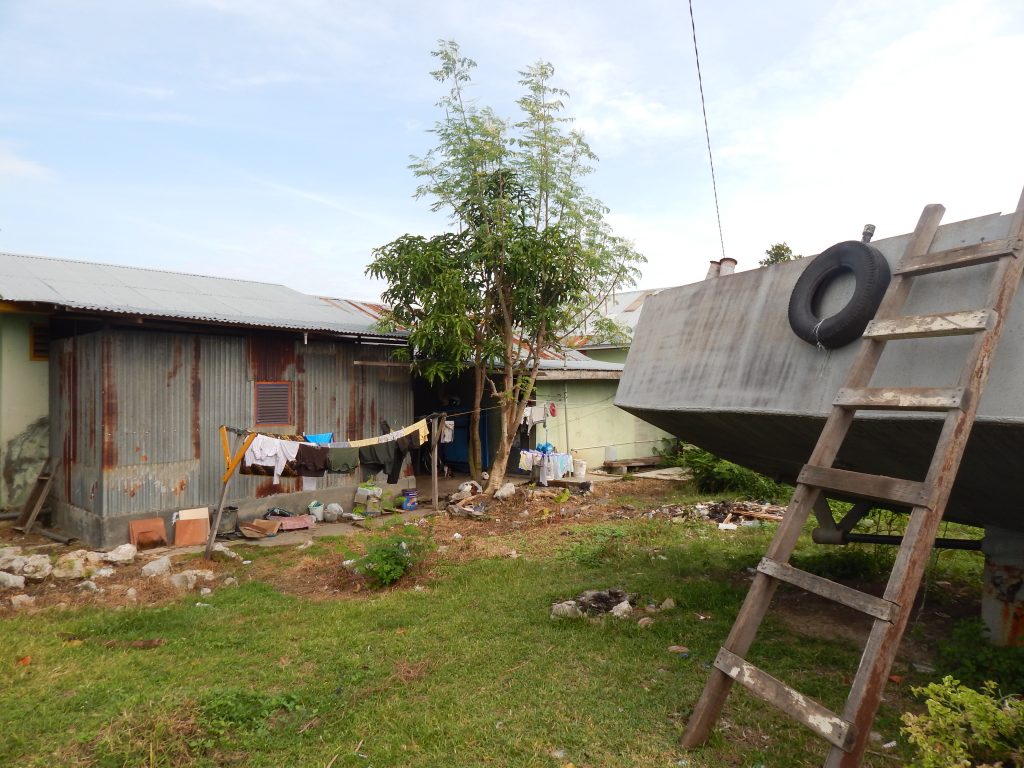
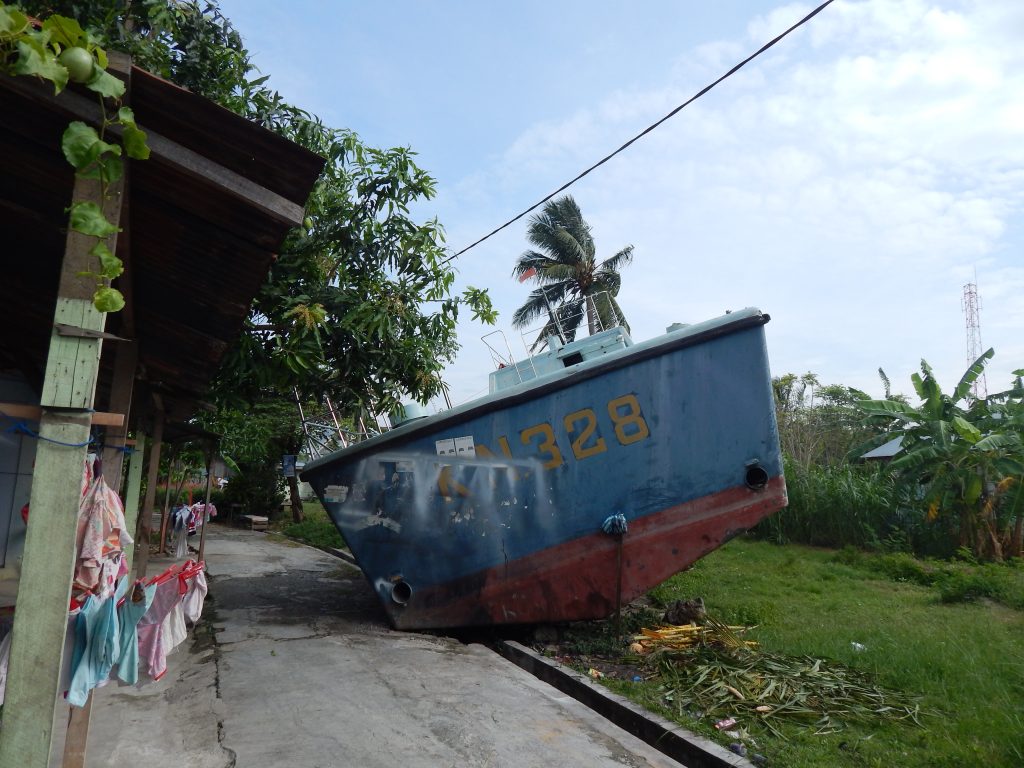


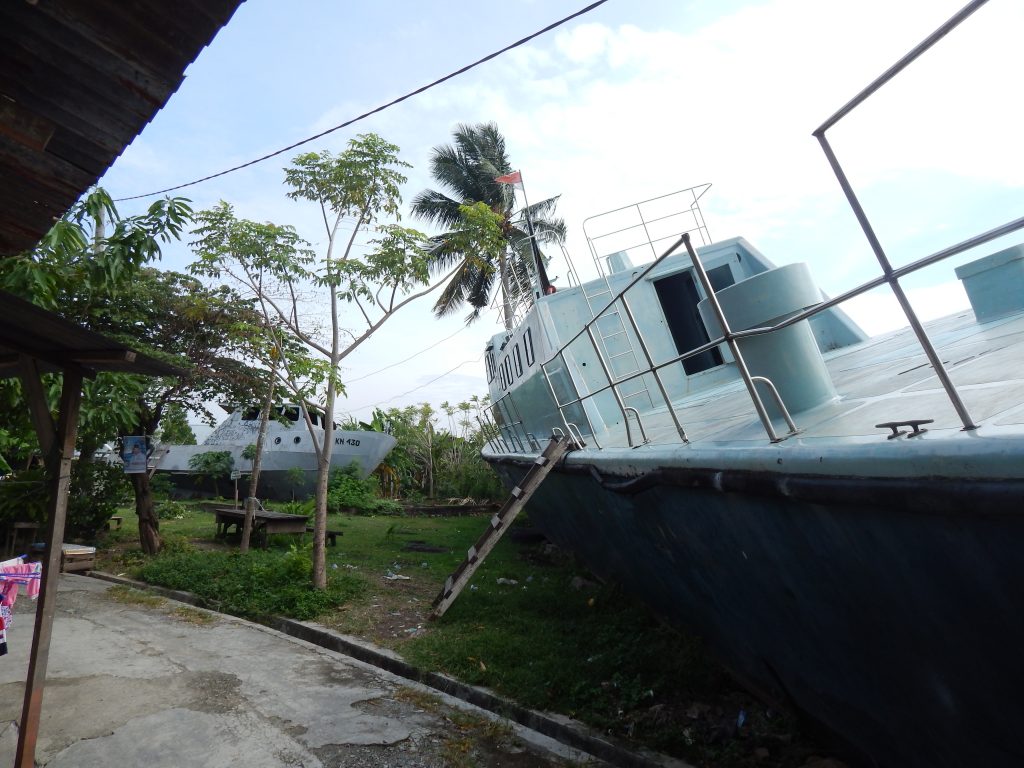
Later, the becak driver took me to the tsunami museum, and once again, I expressed my gratitude for showing me the boats by tipping him. He genuinely thanked me, and I sought the help of some people around to translate a few English words for me. I sensed his sincerity, realizing that he didn’t overcharge me as some other becak drivers might. The lady at PLTD Apung 1 confirmed that I had paid the right price after haggling for a fair deal. Informing the becak driver to pick me up at 8:30 the next day, I decided to explore the area on foot as there was much to see.
The Aceh Tsunami Museum
The tsunami museum proved to be fascinating. Upon entering, I traversed a corridor (as shown in the second picture above). It was dimly lit, and water cascaded down both walls. The purpose of this corridor is to immerse visitors in the sensation of panic, and it certainly achieved that—I felt distinctly claustrophobic!
The museum was filled with numerous exhibits, including photographs, paintings, a library, a memorial with the names of the deceased, and a wealth of educational material. While I captured many images during my visit, I’ll share only a few below. Spending an hour exploring the museum, I eventually decided to move on and explore the Kerkhof graveyard situated adjacent to the museum.
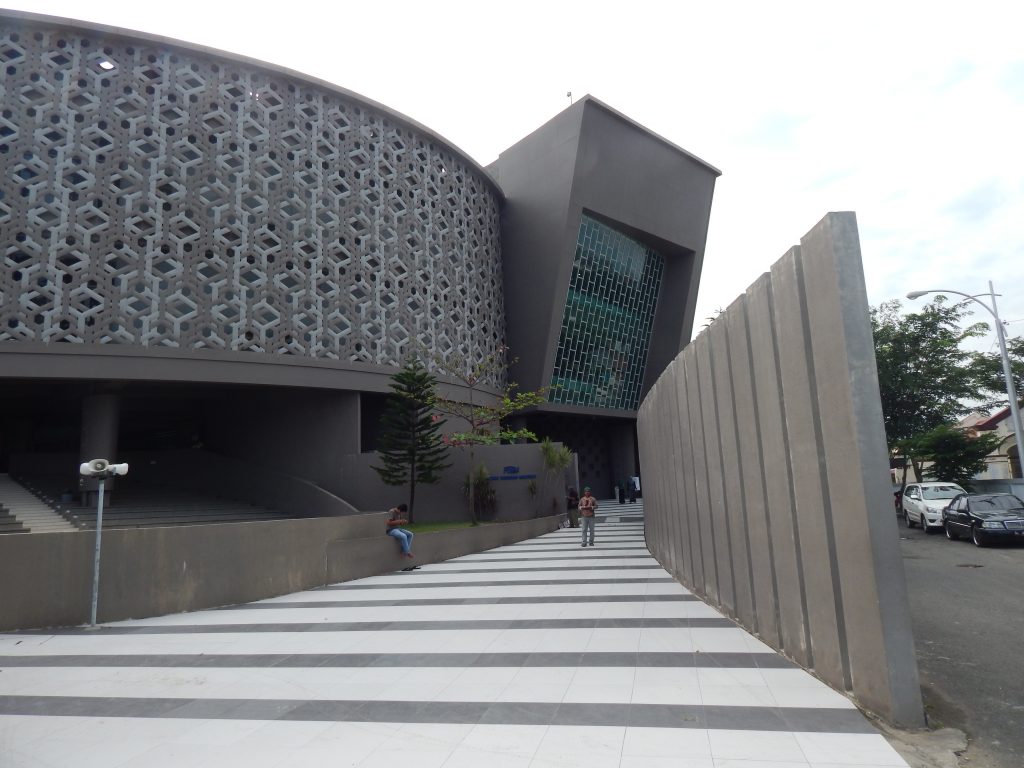
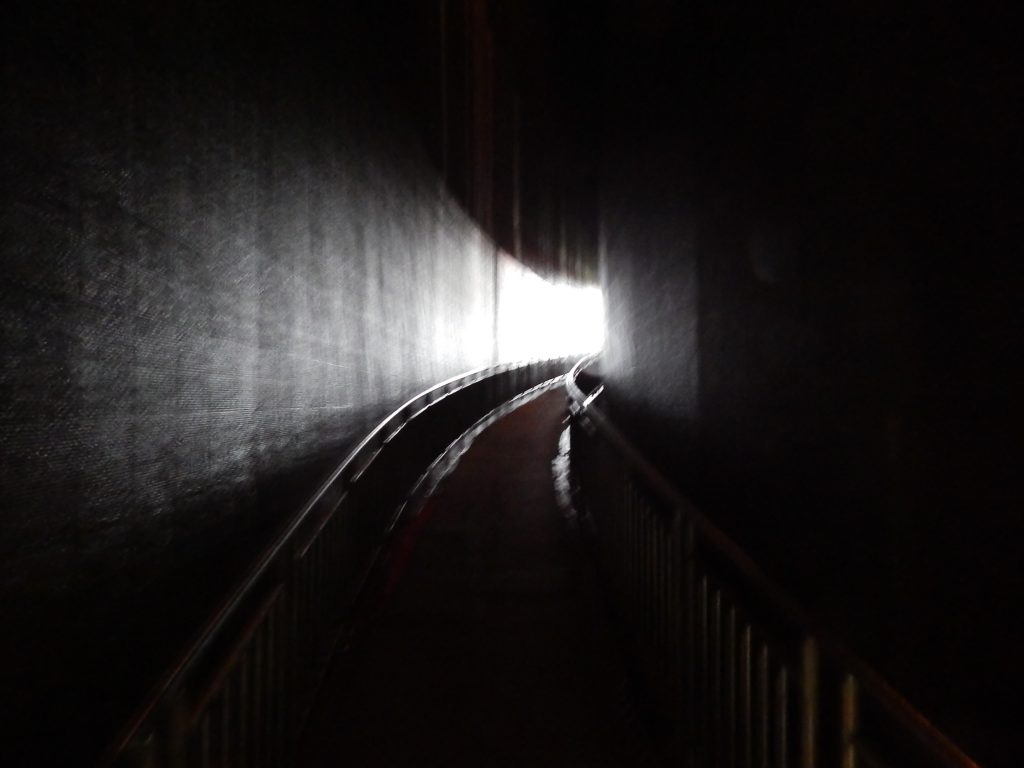
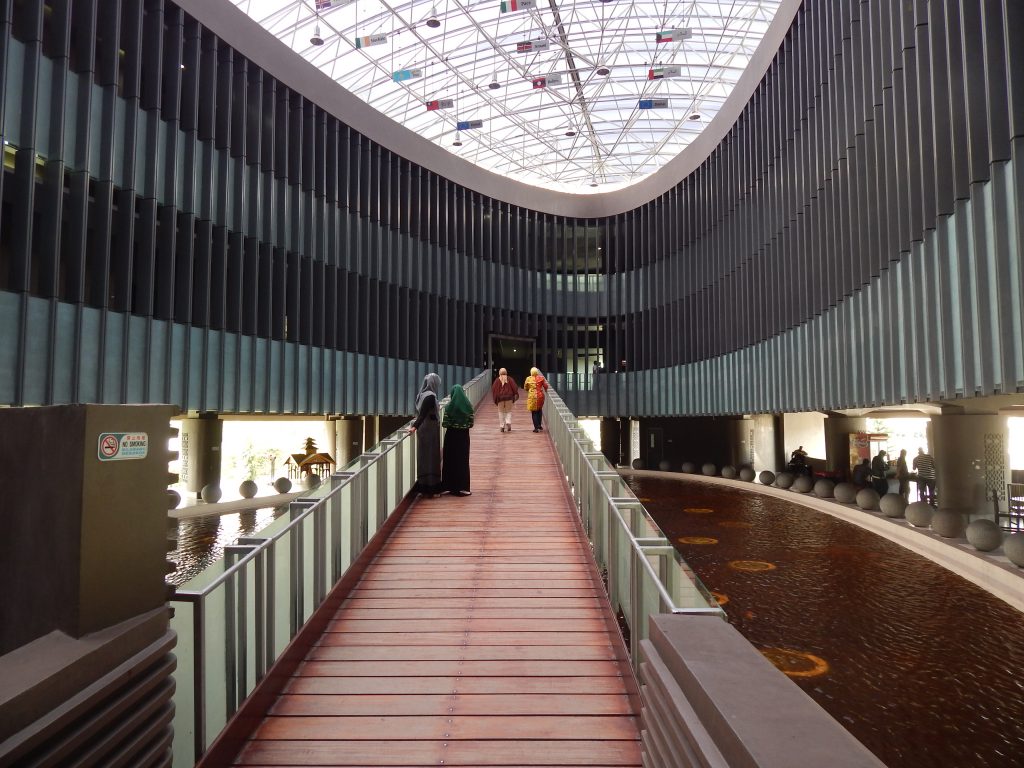





The Kerkhof graveyard
This time, I observed that the entrance was right next to the museum, whereas yesterday it seemed closed off. Initially, I thought the second gate might be shut, but then I noticed a side path leading to a small hut. Outside, a little girl, probably 2 or 3 years old, sat alone. Beside the house was a small entrance gate. I approached the girl and inquired if it was okay to enter. She nodded and called her older brother, Razzi (I hope I’m spelling it correctly). Razzi, a boy of 13 or 14 years old (though Indonesians seem to possess eternal youth, so he could be older), emerged and assured me in English that it was fine for me to take a look. Curious, he asked about my home country, and I shared that information with him.
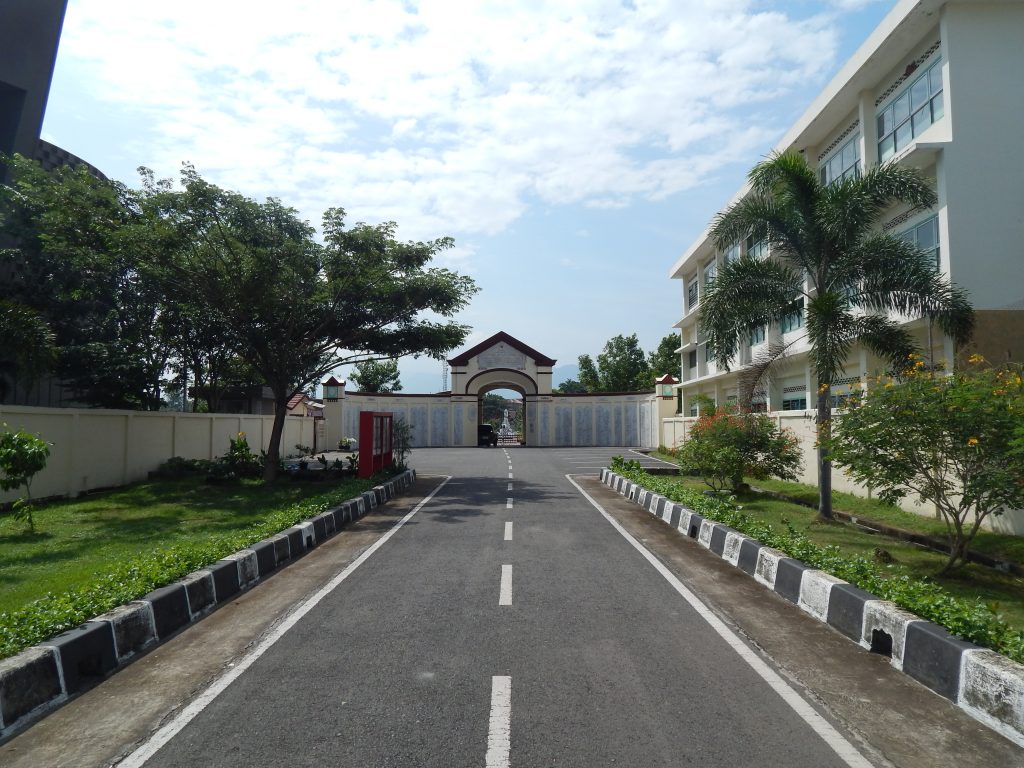
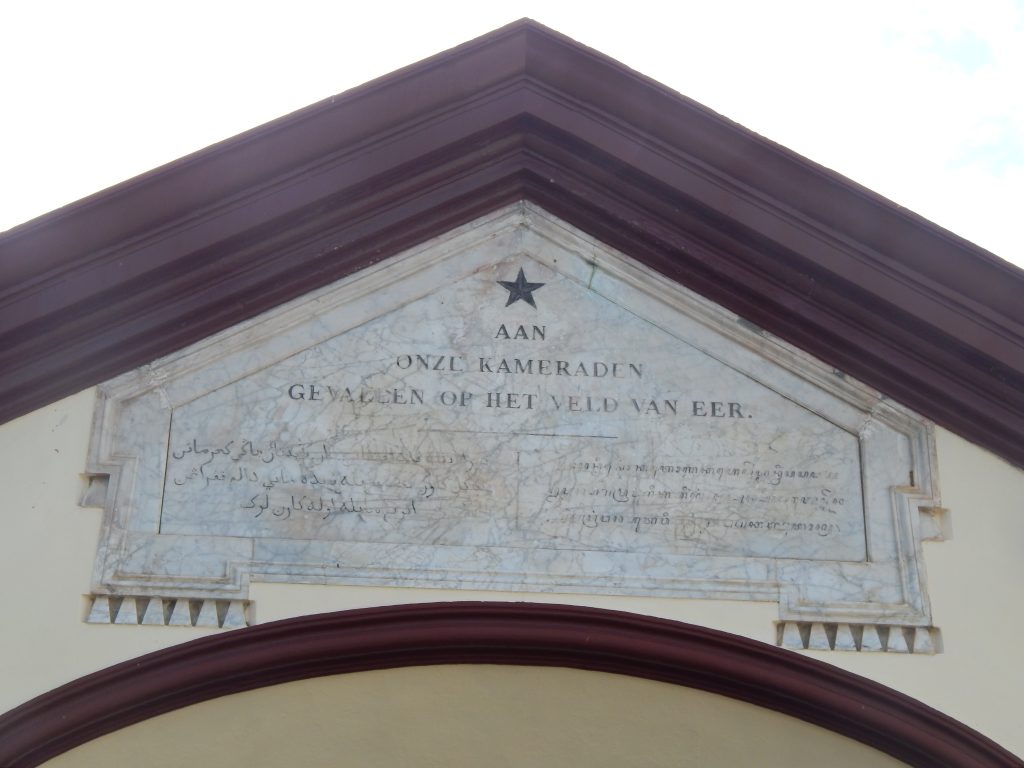




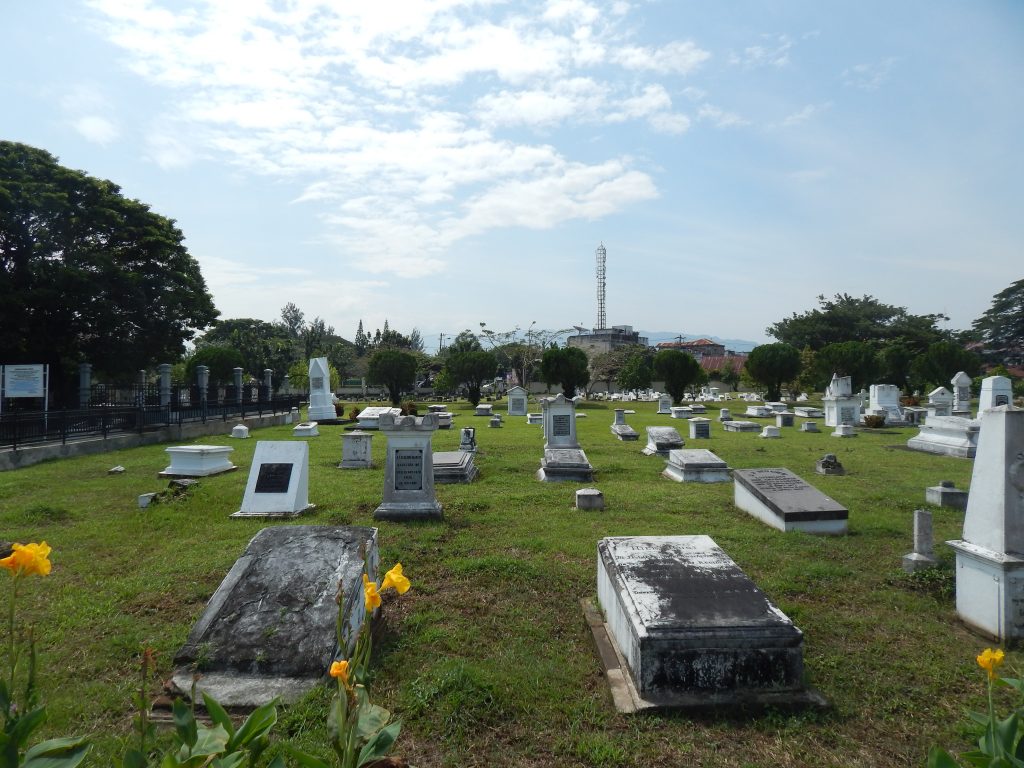
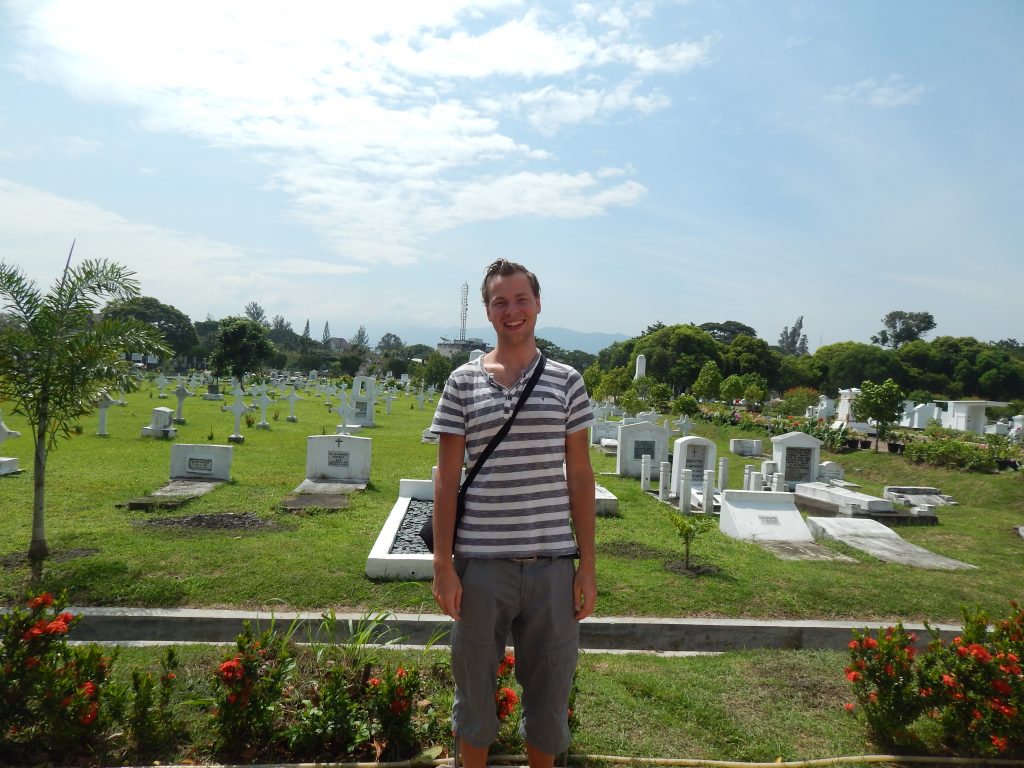
As I ventured into the graveyard on my own for about 20 seconds, Razzi hurried back to me and asked if it would be acceptable for him to accompany me on my walk. I expressed my delight, and Razzi shared that his English teacher encourages him to engage with foreigners whenever possible. I admire individuals who seek to enhance their skills and broaden their experiences. Razzi enlightened me about the cemetery and the Aceh wars. I felt somewhat ignorant for not being aware of this aspect of Dutch history, and it was intriguing to consider that the Acehnese people still maintain a graveyard for their past enemies.
Periodically, a representative from the Dutch government visits Razzi’s family and provides them with funds to upkeep the cemetery. It’s quite surreal to encounter Dutch words in a place so distant from home, and the cemetery is impeccably maintained. After exploring the cemetery, I bid farewell to Razzi and shared my email address with him; he expressed an interest in practicing his English by corresponding through email.
Thanks to the World Monument
I strolled towards the exit and proceeded to my next point of interest. Along the way, I spotted a group of children waving at me from across the street. I reciprocated with a wave and exclaimed, “Portret!?” while gesturing to my camera. Their cheerful response prompted me to capture a photograph.


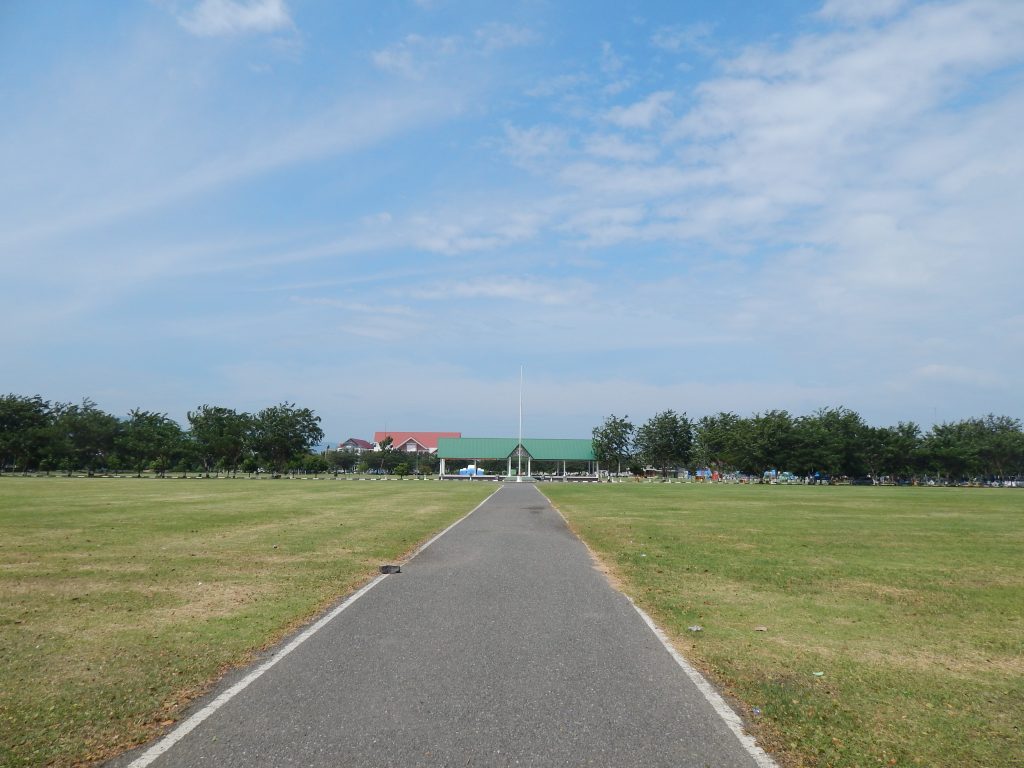
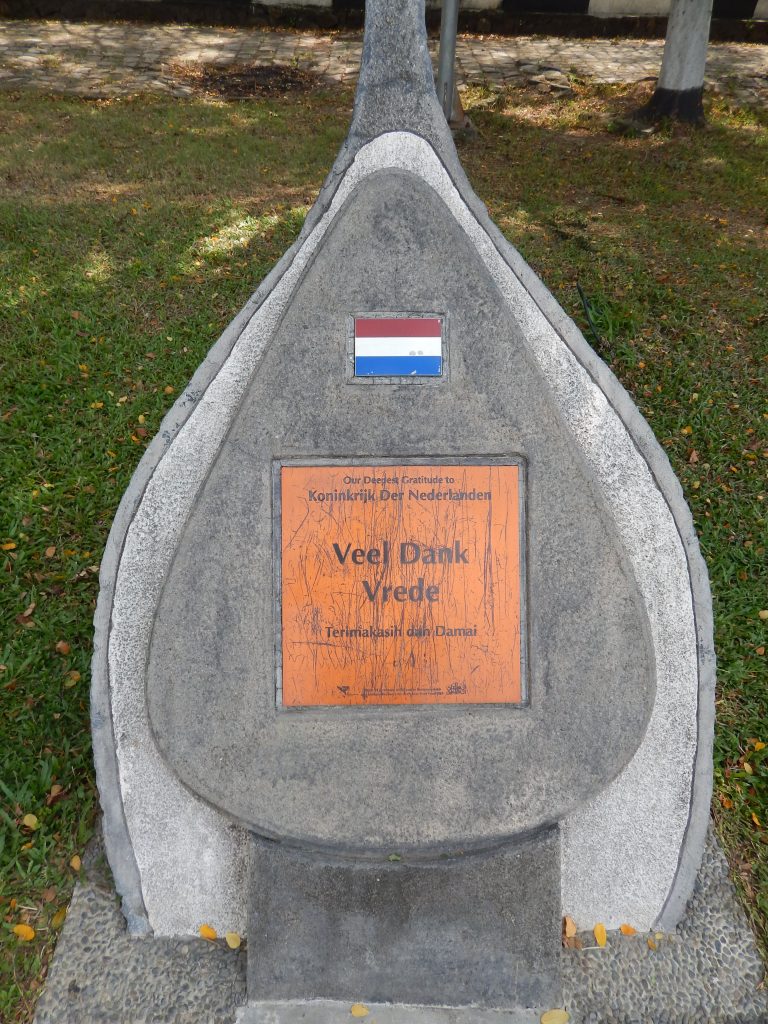
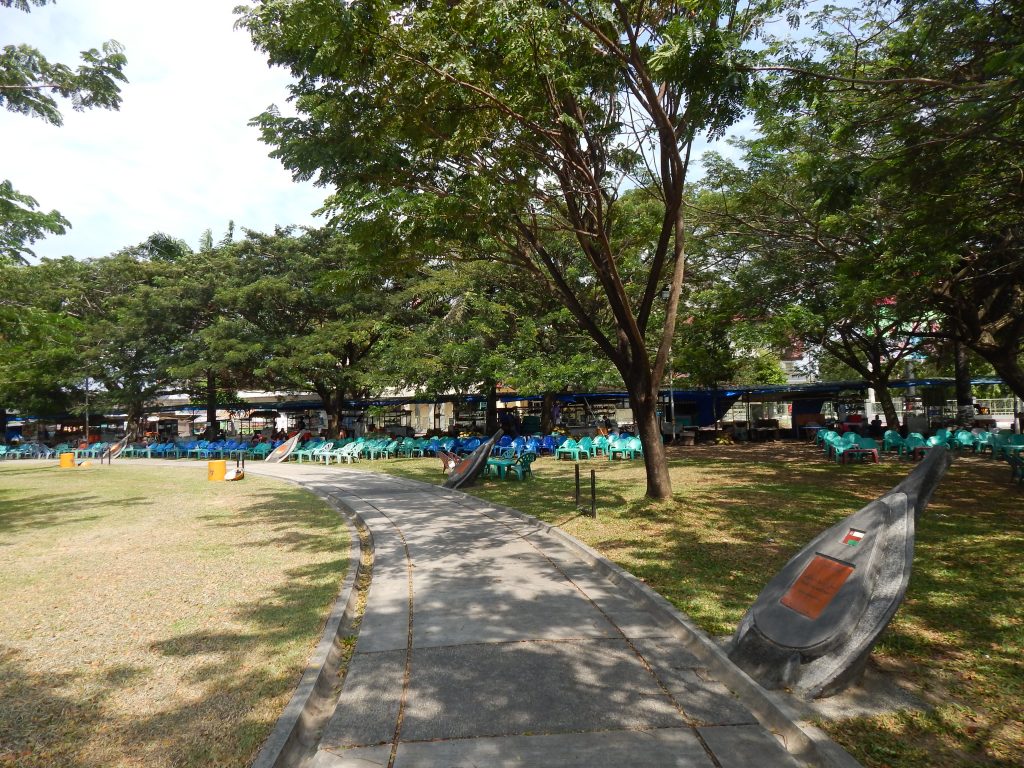

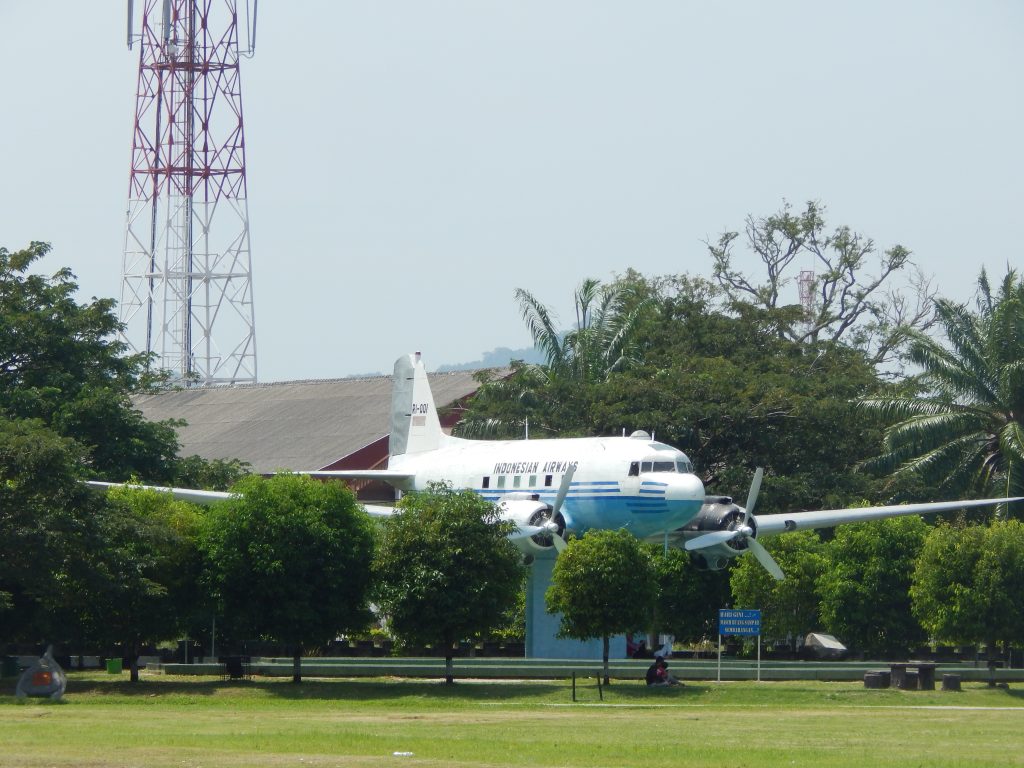




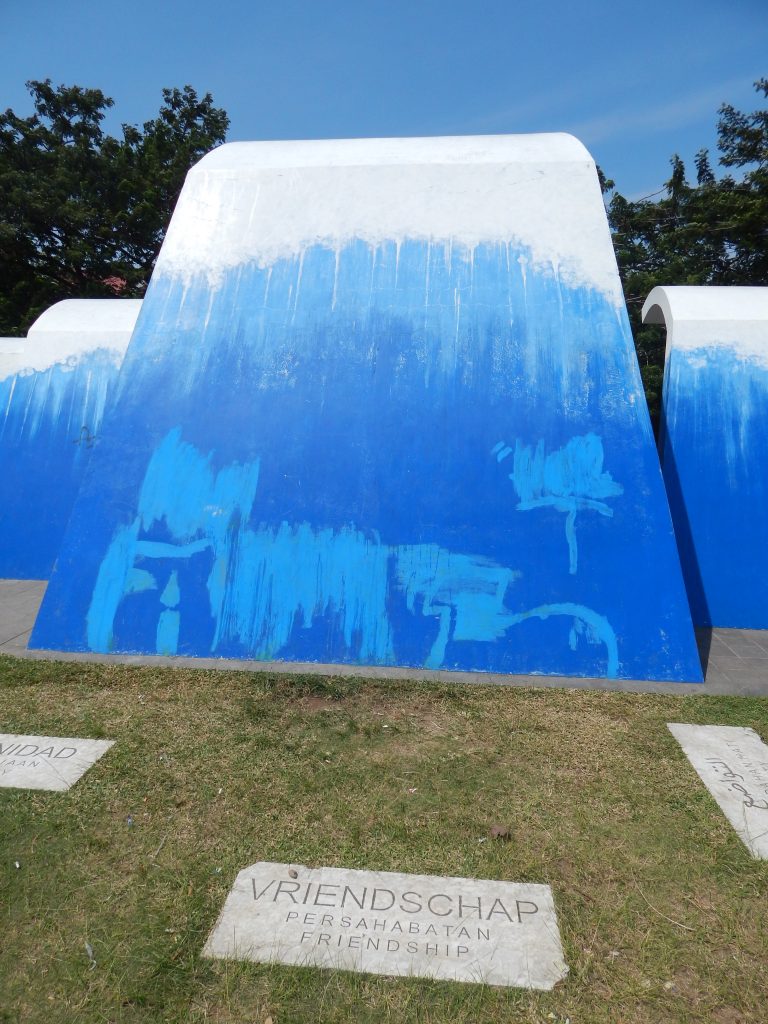
I proceeded to explore a spacious park known as the “Thanks to the World Monument,” a grand expression of gratitude from the Acehnese people for various donations. The park featured appreciation stones dedicated to each contributing country, along with two prominent monuments. After traversing the entire park, I indulged in a refreshing mango juice. The park exuded a magical atmosphere, with countless dancing dragonflies, reminiscent of the enchanting Kokiri Forest from Zelda – Ocarina of Time.
The Womans and Children Hospital of Banda Aceh
I noticed a hospital across the road and decided to explore it. Inside, communication became challenging as many Indonesians were not proficient in English. Some assumed I was injured and seeking medical attention, prompting laughter when I clarified my intention to take a picture of the nurses. It intrigued me to observe both men and women working together. To my surprise, among the hospital staff, I spotted Little John, who had been my becak driver the day before, transporting me from the Ulee Lheue port to the Medan Hotel.
Little John suggested that I visit the large hospital in the evening when the staff finishes their work. I expressed gratitude for his advice and inquired if he could take me to my next destination, Lampuuk Beach, approximately 20 kilometers from Banda Aceh. The journey to the beach justified the fare (70000 from the city to the beach, one way). Initially, Little John brought me back to the hotel so I could retrieve my swimming trunks, laptop, and phone.

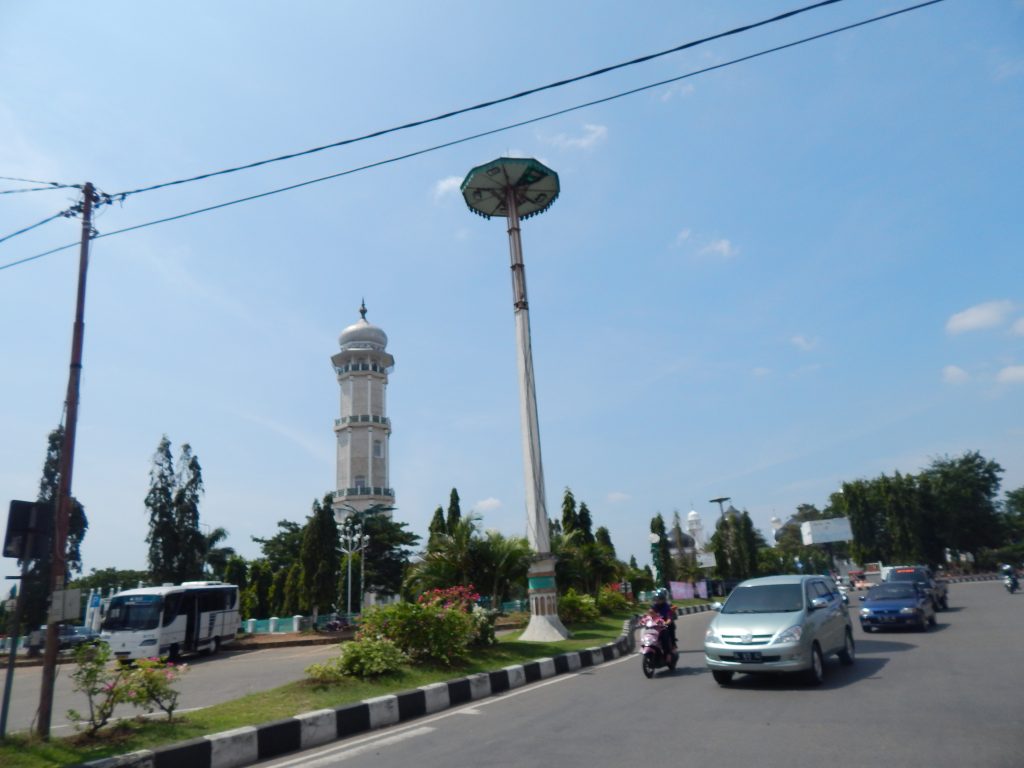



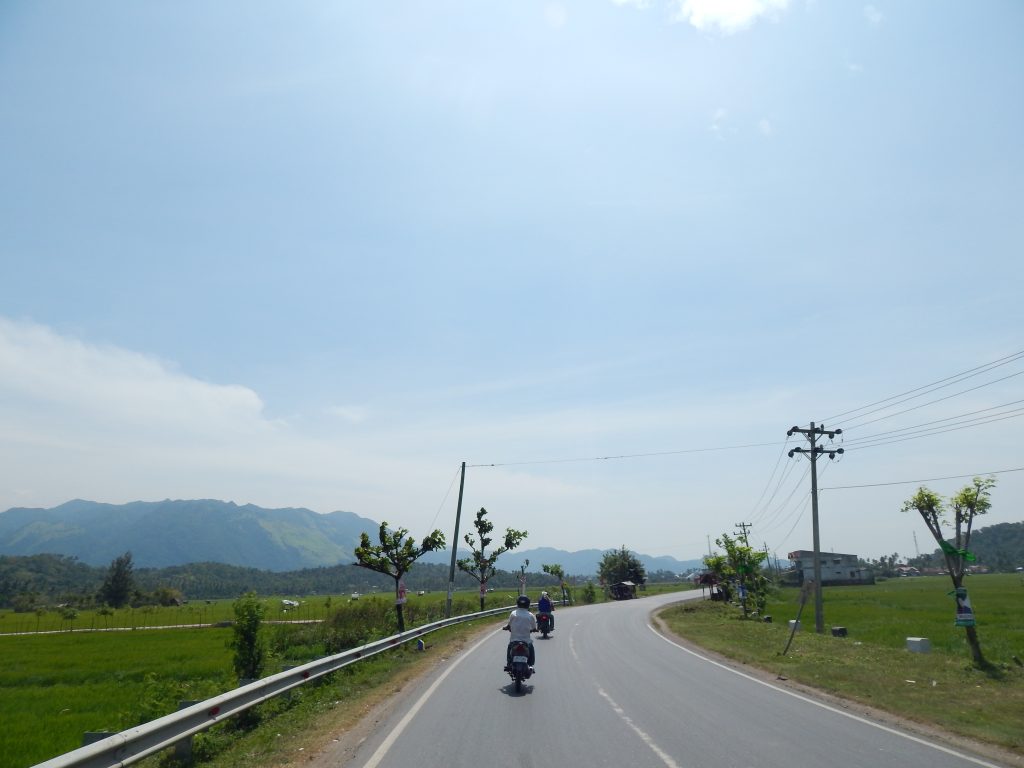


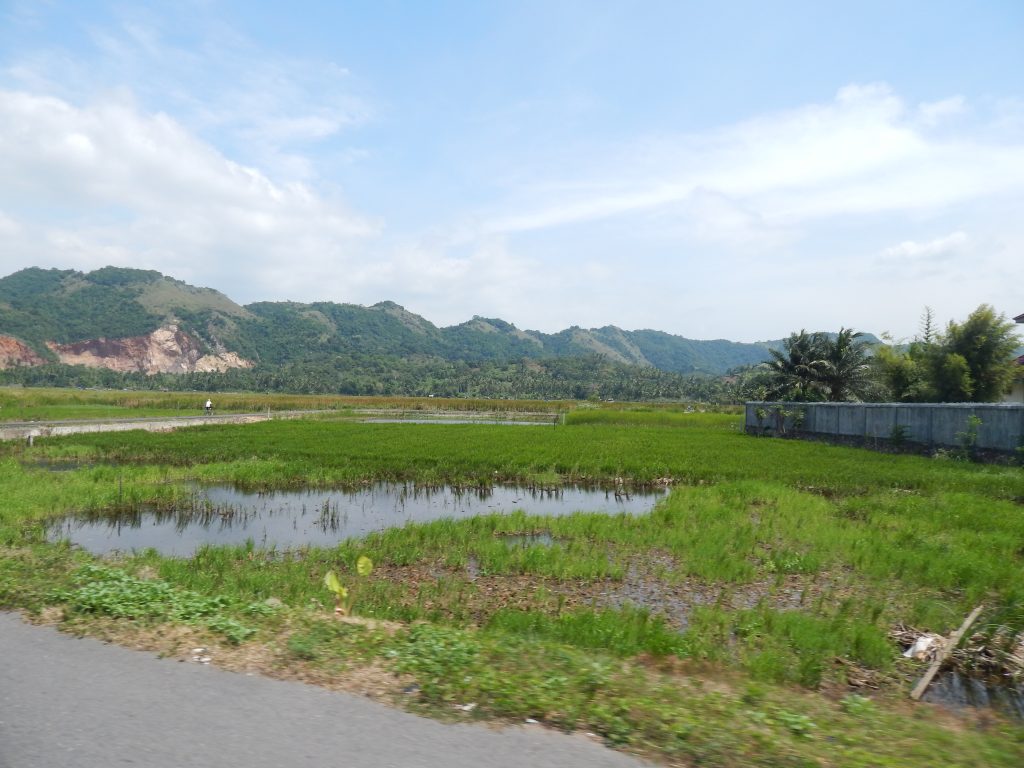
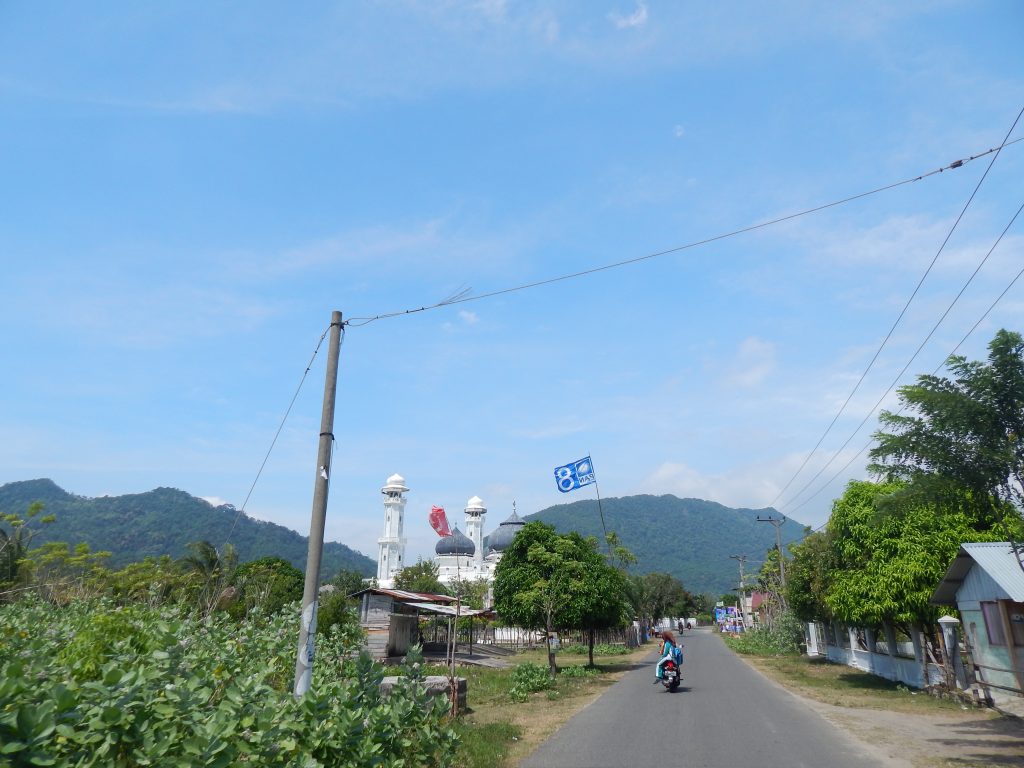


Lampuuk Beach
The becak ride took approximately 40 minutes to reach Lampuuk Beach. En route, we passed through picturesque rice fields set against a stunning mountain backdrop. Along the final stretch of the road, a small mosque greeted us. Eventually, we reached Pantai Lampuuk (last picture above), and the sight was truly breathtaking. This beach unquestionably secures a spot in my top three most beautiful beaches. Its expansive length, width, and the captivating surroundings make it a truly remarkable destination. Judge for yourself.

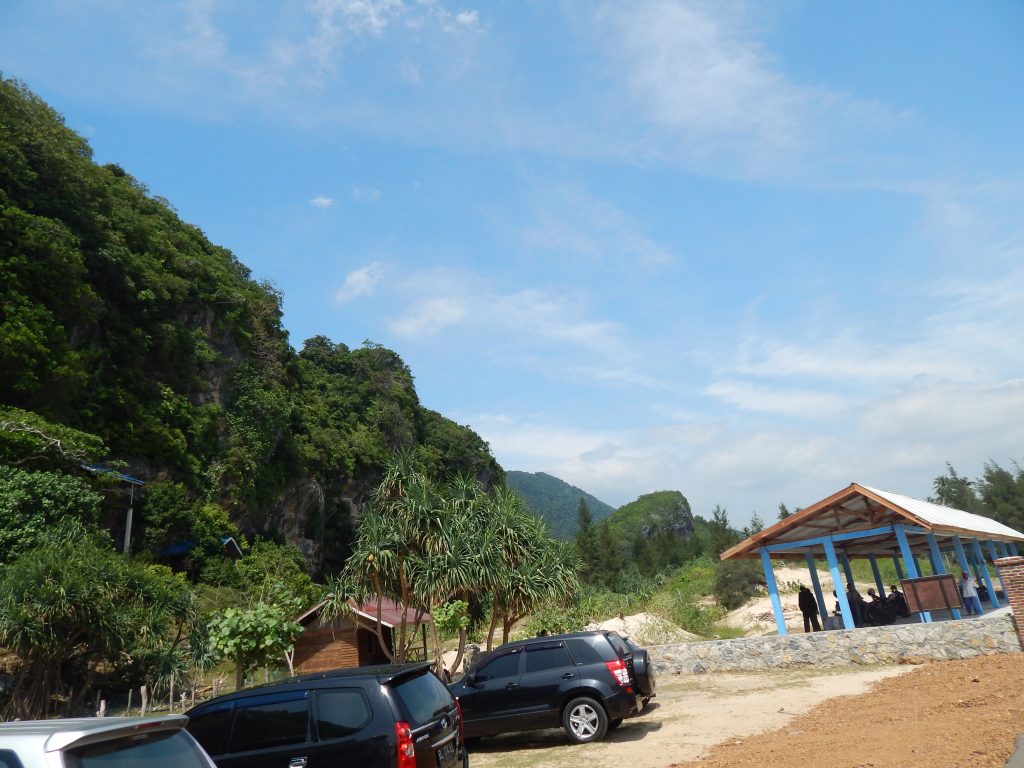
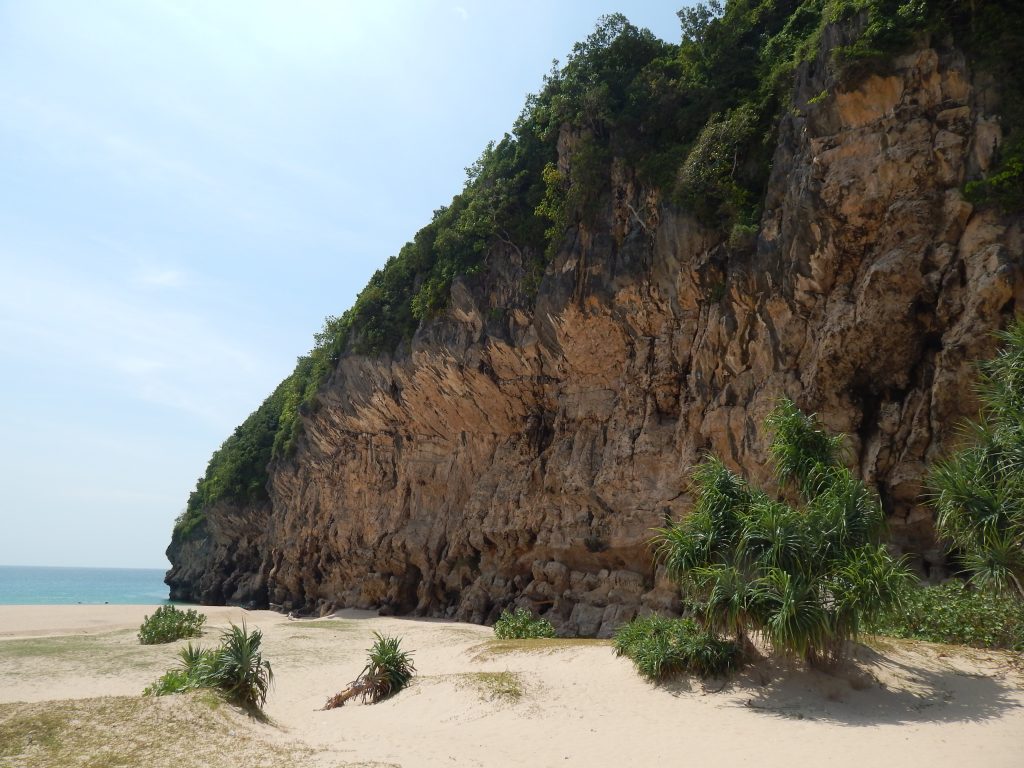

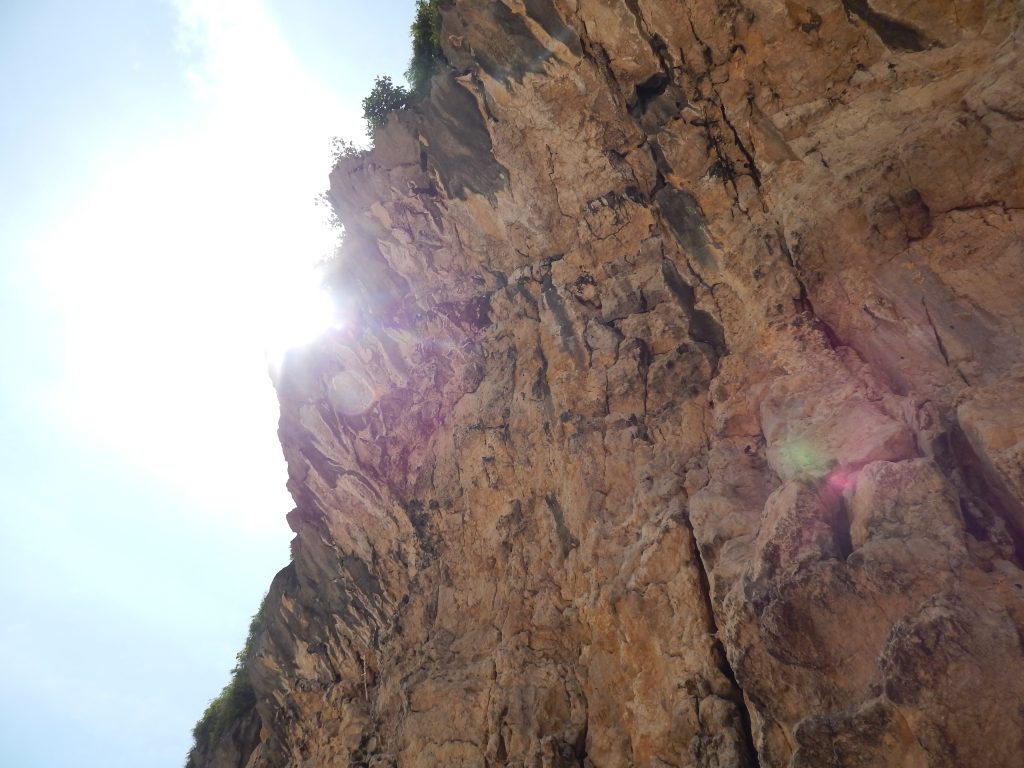
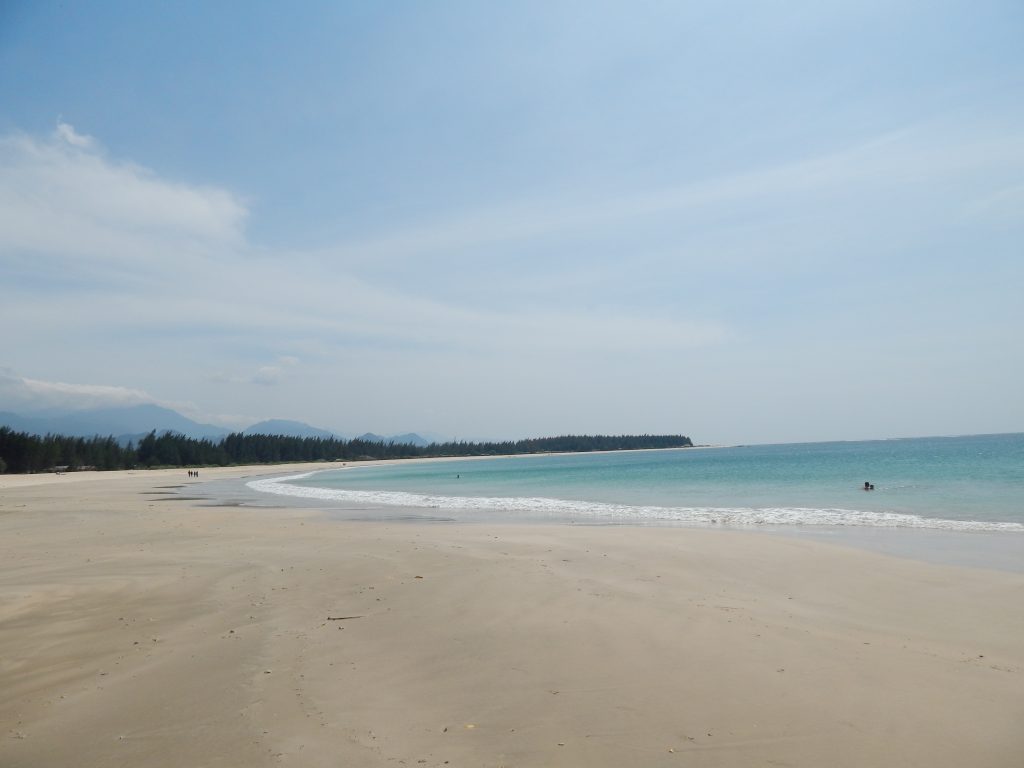


The weather was fantastic, but regrettably, I had forgotten to bring the sunscreen I recently purchased. The beach lay peacefully deserted, with a pleasant breeze and comfortable temperatures—ideal conditions for getting sunburned, I mused. As I strolled along, capturing my initial photos, I noticed Mark and Sebastian in the water, and they, too, recognized me. Mark and Sebastian were the two Germans I had encountered a few days ago on Pulau Weh/Sabang, the ones who recommended the Pria Laot waterfall to me.
I hurried back to the restaurant, retrieved my belongings, and changed into my swimsuit. Joining Mark and Sebastian in the water, we engaged in lively conversation covering a myriad of topics. They shared that they had been stranded on Pulau Weh the previous day due to rough seas, and the ferry couldn’t operate. Arriving in Banda Aceh this morning, they decided to spend their remaining days on Lampuuk Beach. After an enjoyable hour of body-surfing on the waves, I decided to grab some lunch. Marc and Sebastian opted to stay in the water, and I bid them farewell. Following my meal, I took a stroll along the beach to the other side. Many locals greeted me warmly, and some teenagers invited me to join them for a game of football, but I politely declined.


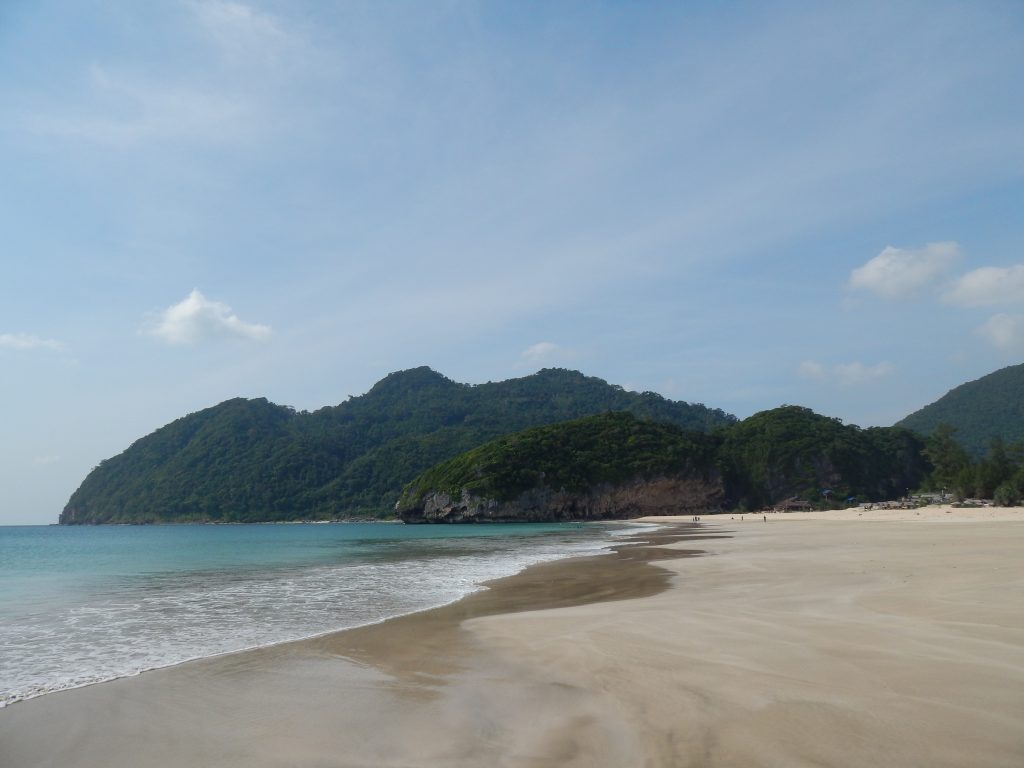



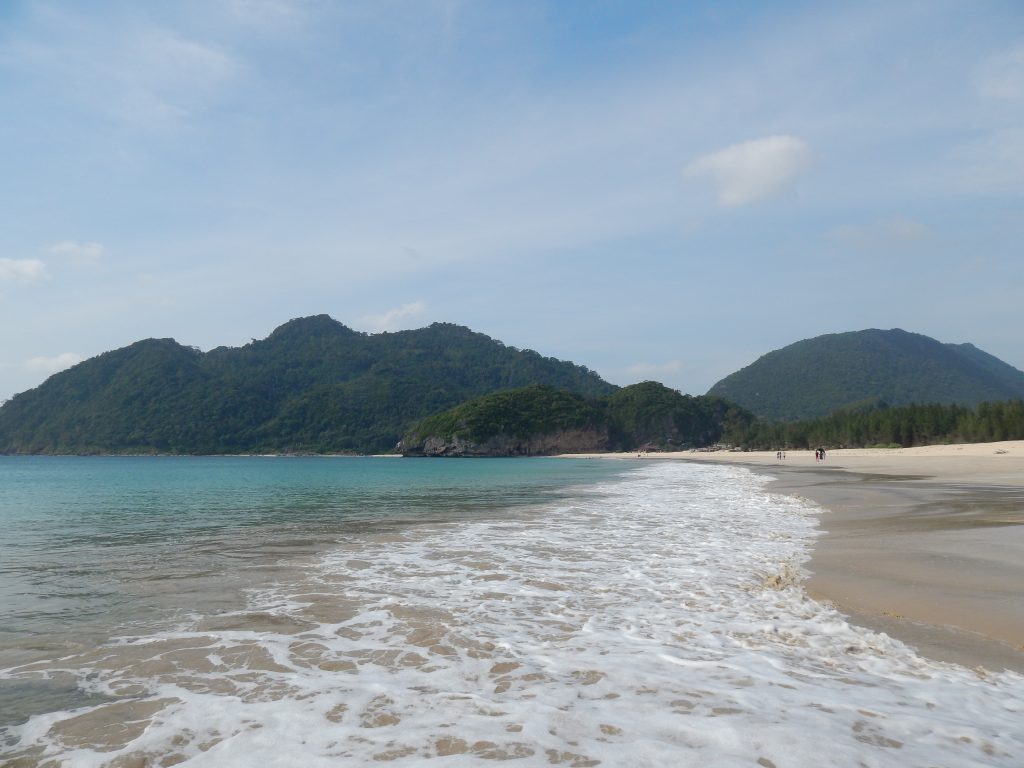
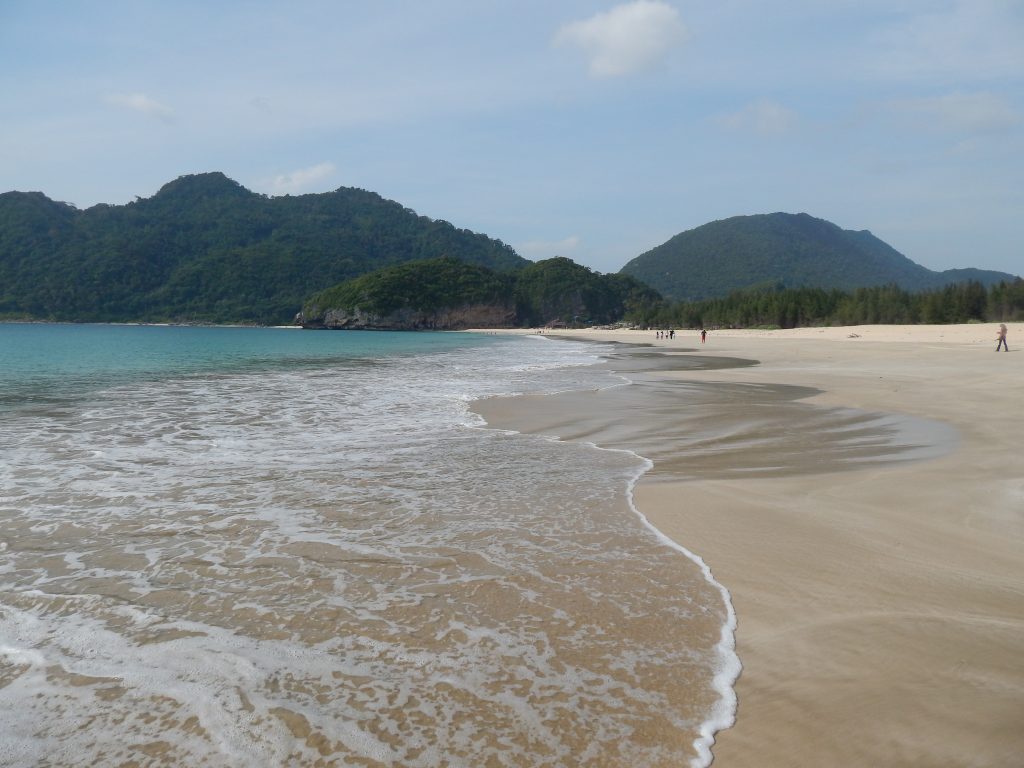
Indonesian Hospitality
After spending almost three hours at the beach, I realized it was time to return to Banda Aceh as I had unfinished business – arranging a flight for the next day. Having extended my stay in Banda Aceh beyond my initial plan, I opted for a flight to Medan instead of a 15-hour bus ride to save time. Back at the hotel, I went online to book a flight with Lion Air, Indonesia’s equivalent of Ryanair. However, I encountered an issue during payment, as they didn’t accept credit card payments for flights departing within 48 hours. Though there was an option for ATM payment, I was unsure about the process, prompting me to seek assistance at the hotel reception.
This is where I met Nur Imran. While the staff at the reception desk struggled to understand me, Nur Imran, who spoke perfect English, stepped in to assist. He suggested checking the ATM in front of the hotel to see if it had a payment menu. Upon discovering there wasn’t any menu, Nur Imran kindly offered to walk with me to the travel agency. During our visit, he helped translate our conversation and assisted me in booking a ticket. Outside, I expressed my gratitude to him. What a hospitable man!
I asked about his impressive English proficiency, which seemed above average for an Indonesian man. “I watch a lot of movies,” he explained. We laughed and discussed some films, discovering a shared interest in action movies. Nur Imran then invited me to grab some food. Despite not being hungry, I joined him, intrigued by his story. He shared details about his family and how they survived the tsunami.
Visiting the Hospital
Later that evening, Nur Imran generously drove me to the large hospital. I didn’t take any pictures there. The hospital was constructed after the tsunami and had a somewhat uninviting appearance. Its empty white walls lacked the vibrant colors found in Dutch hospitals, although the architectural design remained similar.
We arrived at around 8 pm, and I directed some questions to the female doctor who was walking with her phone in hand, similar to how they do it in Dutch hospitals. It’s strange how the employees here share some characteristics with hospital staff in the Netherlands. After a brief look around, I left swiftly. Nur Imran then took me to the place where he used to live and shared his story about escaping the 2004 Boxing Day Tsunami.
Tsunami Survival Story
On Boxing Day in 2004, he had planned to visit his parents. Rising early, he purchased rice from a nearby street. His wife was at home with their four-year-old daughter. When the sea quake occurred, they rushed outside, patiently waiting for the commotion to subside. Later, they returned inside to gather more belongings to place in the car.
Nur Imran had already initiated his car’s engine to warm it up. Suddenly, a young man sped by, shouting, ‘Water, water, water, water!’ This unusual sight puzzled him, thinking, ‘Water reaching this far inland is very strange.’ His house was situated approximately 3 kilometers from Banda Aceh’s shoreline. Upon second thought, he observed more people running in panic. In the distance, he discerned the water approaching. Quickly, he called out to his wife, and they all rushed into the car.
Additional individuals, including Nur Imran’s cousin, joined the car for safety. Although the car, designed for four adults and the driver, was now packed with ten people, including his 4-year-old daughter and wife, there was still room for one more adult. An elderly person on the street observed the frantic scene of people entering the car, yet he made no effort to join. They signaled for him to come aboard, and he managed to stand on the car’s spoiler, gripping the roof. In a swift motion, Nur Imran drove away.
As Nur Imran drove, he faced critical decisions. The occupants inside the car were in a state of panic and chaos. Urgently, he instructed everyone to either be silent and pray or provide helpful information. Maintaining focus on the road was crucial, and amidst the surrounding panic, he skillfully navigated through the chaotic scene, zigzagging between frantic individuals to avoid collisions. Despite the urgency to accelerate, he realized that his gear stick was still in the first gear.
Shifting gears became impossible amid the chaos as Nur Imran’s daughter inadvertently sat on the shifting gear. With quick thinking, he cradled her with his left hand (as the steering wheel is on the right side in Indonesia) and passed her to passengers in the back while steering with his right hand. In this frantic moment, he heard a small crack and later realized he had broken his shoulder due to his daughter’s weight. Unable to address the injury immediately, he turned left, enabling him to change gears. His goal was to drive toward the airport, outside Banda Aceh.
We veered onto a main road, and Nur Imran explained that this route led to the airport. Passing my former hotel, Hotel Anggrek, where I had stayed a few days ago, I learned from Nur Imran that the road used to be much narrower nine years ago and had since been widened. Curious about the speed during their escape from the tsunami, I asked, ‘How fast were you driving at this point?’ ‘Around 100 kilometers per hour,’ he replied. Then he shared an astonishing detail, ‘Imagine the old man standing on the spoiler, Maarten.’ My expression turned to disbelief. ‘Did he survive?’ I asked. Nur Imran reassured me that they all safely reached the airport, where they shared the rice and water. Subsequently, Nur Imran and his family continued their journey to Jakarta.
I extend my gratitude to Nur Imran for sharing his story and his companionship that day. When I revisit Sumatra in the future, I look forward to visiting you in Meulaboh.



Following his narrative, we opted to explore one more landmark related to the tsunami, which Nur Imran hadn’t seen either. Later, we enjoyed a drink in front of the hotel. I bid my farewells and headed back to my hotel. Tomorrow, I had a flight to catch to Medan.
